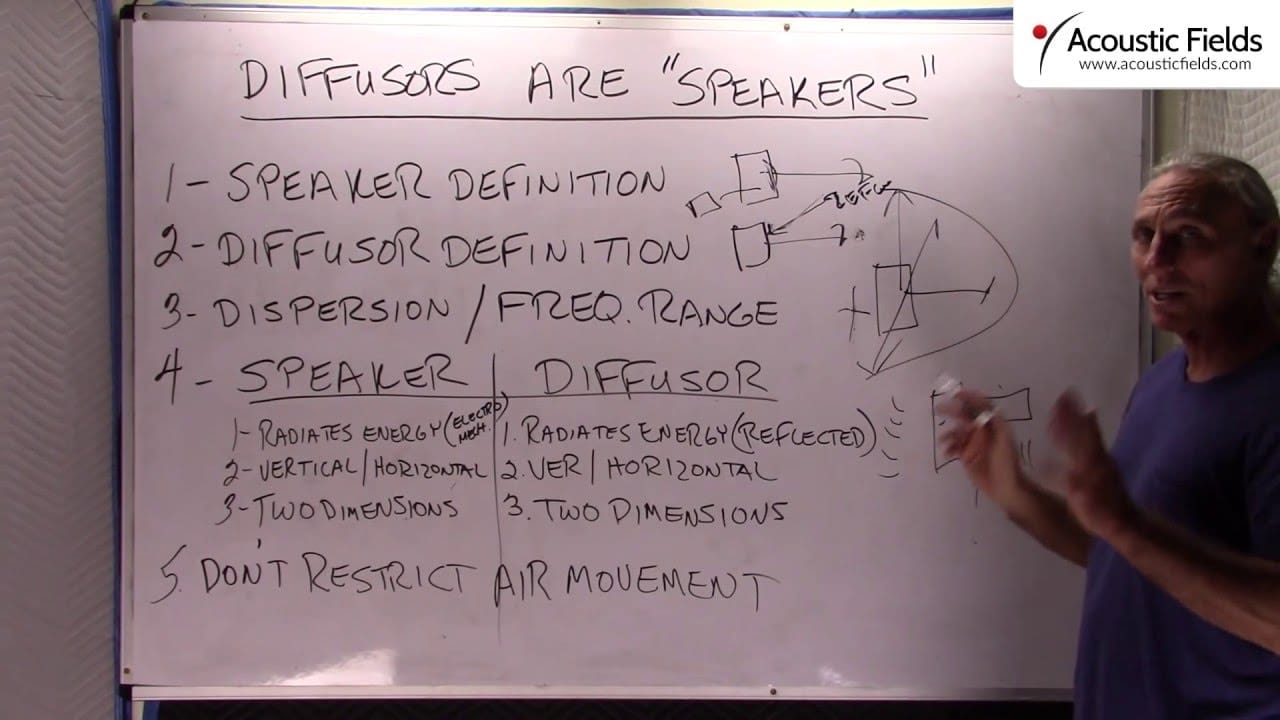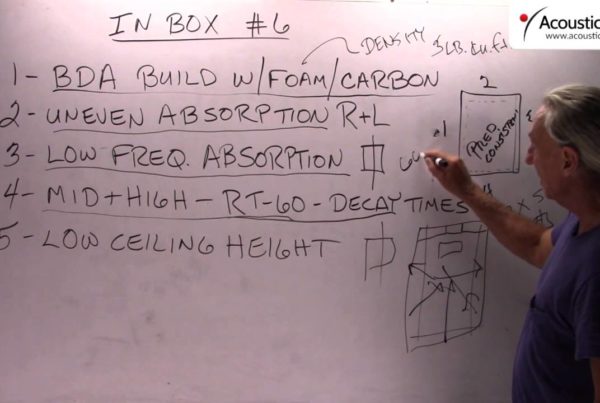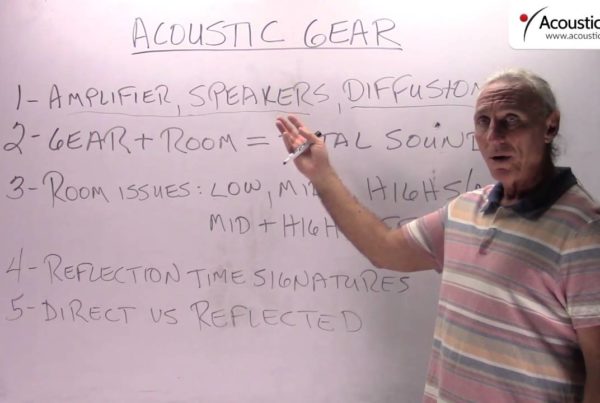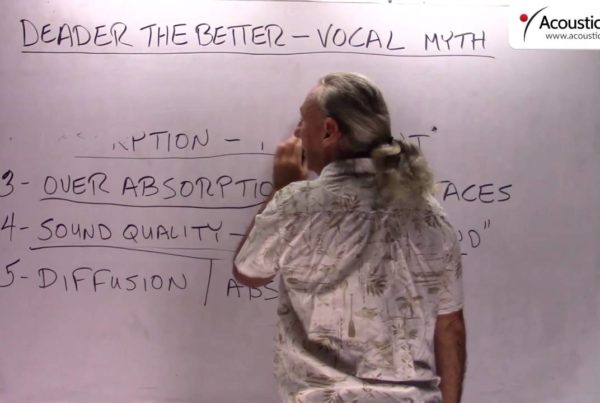There seems to be a lot of confusion with diffusion. I am just trying to compare it to speakers and give you some idea of how it all works. I see some really poorly applied situations and diffusers are very expensive to build, the materials are not, but the labor is very expensive. So what is a speaker ? It is an energy radiating device. It radiates energy into space, free space hopefully. Diffuser definition: same thing, only that it doesn’t radiate energy on it’s own, it uses the reflected energy from the room to produce energy. While one device uses an amplifier and drives a driver, the other power source is the reflected energy from the room. These are the main differences, they both produce energy, and they both radiate energy, and that is the similarity I want you to get here. So, how do we know that they are really similar? Because they both have frequency ranges, they both throw energy out into space.
Here are some comparisons between the two:
The speaker radiates energy, it is electromechanical and the diffusor does the same thing with reflected energy. So we have vertical and horizontal for a speaker, so a speaker radiates energy in these two dimensions, sometimes three, and the goal is to manage all the energy and the unwanted pressure that goes with it. You can also achieve the same multi plane dispersion with diffusion using quadratic diffusion just on the way you positionen it. Because the vertical diffusor will diffuse sound out in a horizontal array and a horizontal diffuser will diffuse sound out in a vertical way. You can get the same two dimensions of diffusion that you can get out of a speaker, a speaker can give you another dimension but the similarities are the same. I want you to start thinking about a diffuser as a speaker. It’s a sound radiating device, not a sound generating device. This would probably be the easiest way to say it.
The dimensional impact we have already discussed, here is the big thing that I see all the time: I see this a lot and you just can’t do it. If you have diffusers across the rear walls, they have a radiation pattern just like a speaker. That radiation pattern is determined by their frequency range; the orientation of the diffuser, whether is vertical or horizontal. So this radiation pattern has to be taken into consideration. A lot of people put a chair right here, they put a couch somewhere else and they will block the diffuser. Well you wouldn’t put a couch or a chair in front of your speaker, would you? No! If you did, you’d better do it to the other side. The bottom line here is: You can’t block the radiation pattern of the device, whether it is a speaker or a diffuser, because it is that energy, you have to let it do it’s job. With the speaker you have to let the direct energy come out and then you have to let it be mixed with the reflections of the room, and then hopefully manage it correctly with the listening position, so you get a balance between the direct and reflected energy. And that’s all controlled using time signature calculation. So you can vary that, you can change the width and depth of the sound stage by controlling all these variables. So you have to be very careful with the diffuser in the same way, because even though it is not electrically or actively producing energy, it is reflective, more passive, more analog. So the bottom line here is, don’t block it’s radiation pattern, let it do it’s job. Let the speaker do it’s job, don’t put anything in front of it and obviously let the diffuser do it’s job and don’t put anything in there. And use diffusion. It is the most understood, and it’s so good for the sound quality in your room. Once you have it your musical life will change forever and you will wonder how you ever lived without it.
—
This is an unedited transcript from our video series from Acoustic Fields. There will be some errors in grammar and sentence structure that occur during this translation process.
For complete understanding and comprehension, please view the video which is included in this text. For any additional information regarding this topic or others relating to room acoustics, please contact us directly at:
P: 520 – 392 – 9486








We use broadband absorption in the two most critical frequency regions in small rooms. Our Diaphragmatic absorbers, ACDA series, have…
Interesting web site and provocative introduction. Please check your copy for typos, otherwise nicely presented. I would like to see…
There is no such thing as soundproof anything especially carpet. Low frequency noise transmission requires a permanent construction fix with…
Hello Dennis! Our neighbors put a Ice Bath in their garage which is right below our bedroom and the Low…